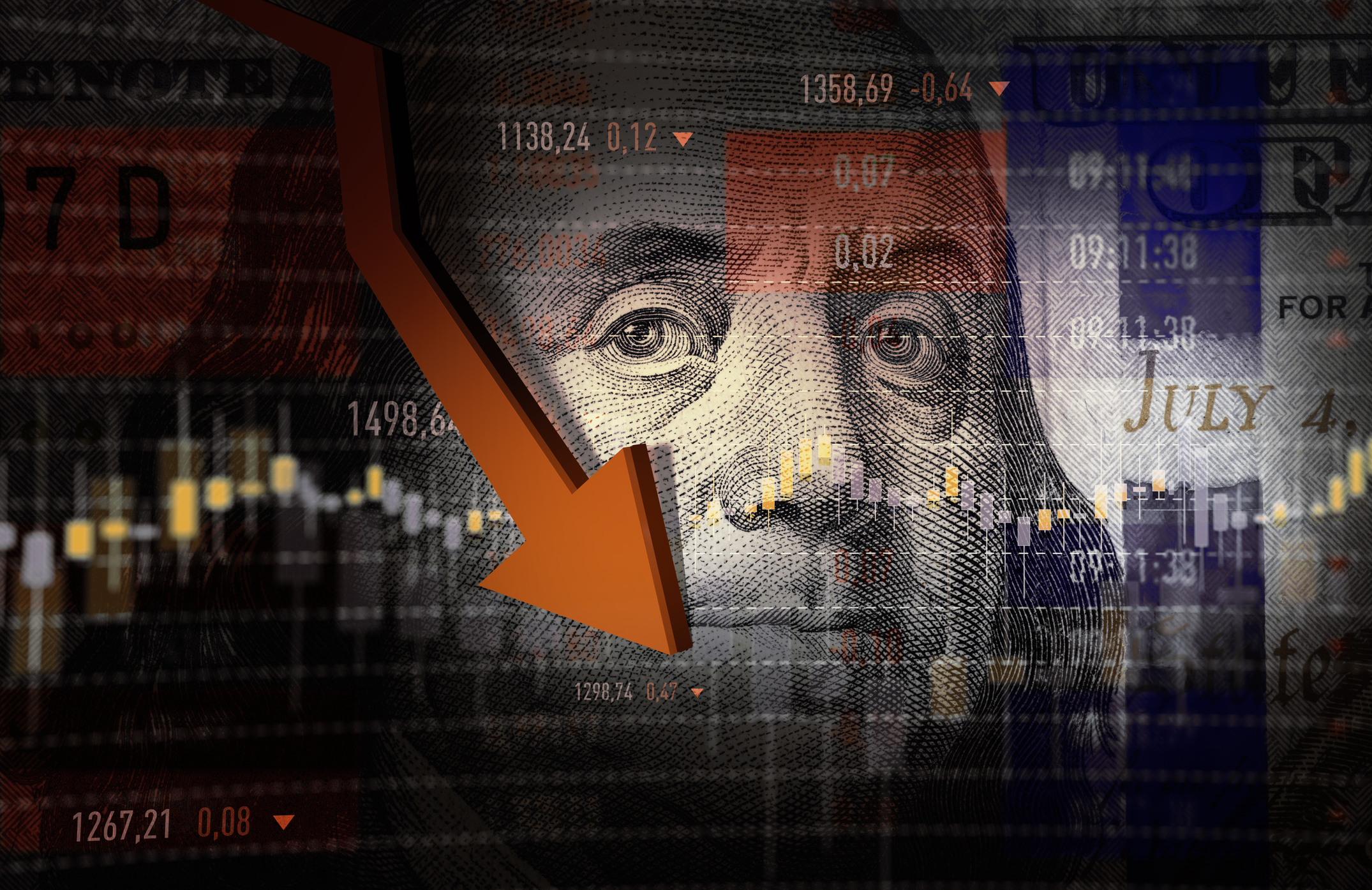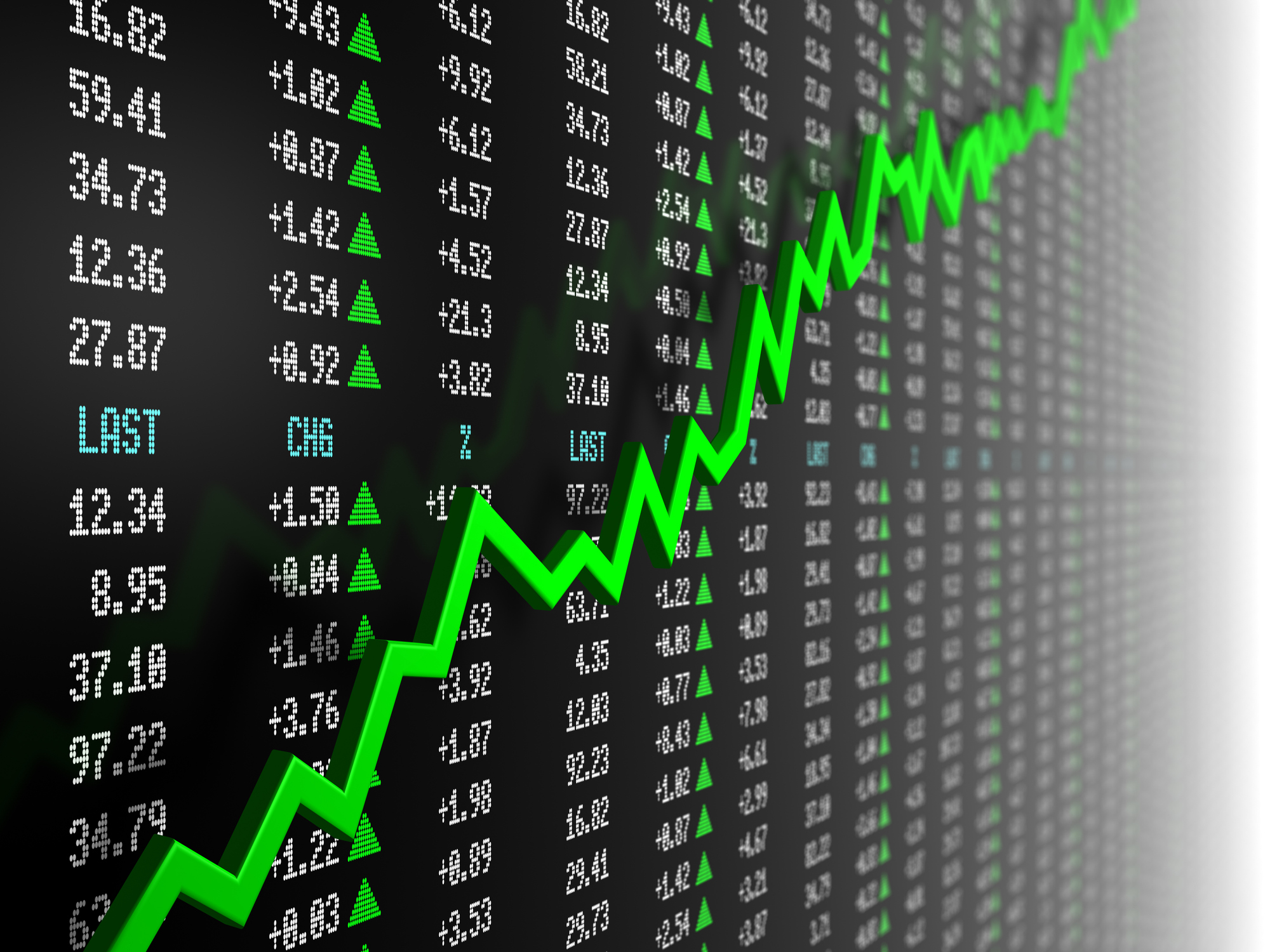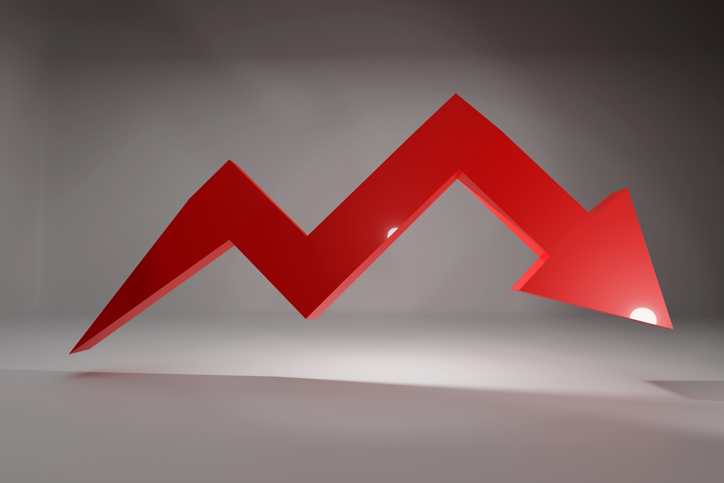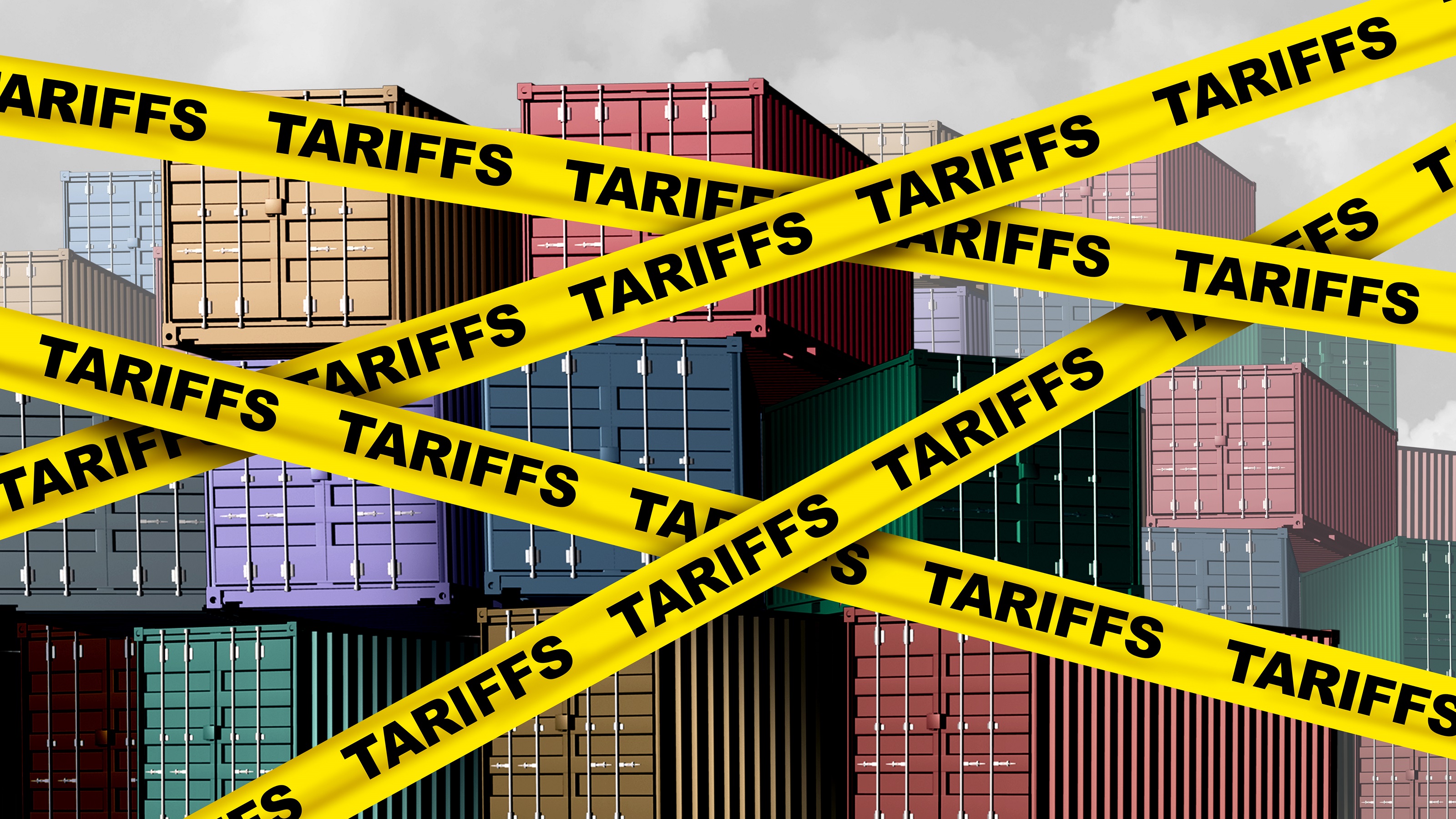Stock Market Today: Dow Dives 1,123 Points After Fed
Market participants reacted predictably to a well-telegraphed hawkish turn by the Federal Reserve.



Joey Solitro
The Dow Jones Industrial Average opened higher but closed lower for a 10th consecutive trading session, and the S&P 500 and the Nasdaq Composite gave up early gains, too, as markets processed what could be the Federal Reserve's last rate cut for the discountable future. Nvidia's recent downtrend continued too, and the 10-year U.S. Treasury yield is still heading higher.
It wasn't the 25 basis points that had investors and traders itching for Wednesday – it was the wording of the FOMC statement, the look of the dot-plot and Fed Chair Jerome Powell's press conference. Based on two of those three pieces, the Dow, the S&P and the Nasdaq turned sharply lower.
In addition to the headline rate cut, there was one key change to the FOMC statement. "In considering the extent and timing of additional adjustments to the target range for the federal funds rate," today's statement reads, "the Committee will carefully assess the incoming data, the evolving outlook, and the balance of risks."

Sign up for Kiplinger’s Free E-Newsletters
Profit and prosper with the best of expert advice on investing, taxes, retirement, personal finance and more - straight to your e-mail.
Profit and prosper with the best of expert advice - straight to your e-mail.
The phrase "the extent and timing of" is new.
As for the dot-plot, at the median the total number of cuts in 2025 is down to two from the four the Fed forecast in September. So, after 100 basis points of rate cuts, the Fed will hold for incoming data.
The central bank also updated its forecast for 2025 gross domestic product (GDP) growth, boosting it to 2.1% from 2.0% in September, and the unemployment rate will be lower, 4.3% vs 4.4%. The Fed now sees the annual rate of growth for the Personal Consumption Expenditure Price Index (PCE) at 2.5%, up from 2.1% in September. And core PCE will be 2.5%, up from 2.2%.
We continue to track developments related to the FOMC meeting on our live Fed blog.
The Dow Jones Industrial Average, on its longest losing streak since September 1974, was down 2.6% to 42,326. The S&P 500 declined 2.9% to 5,872, while the Nasdaq Composite fell 3.6% to 19,392.
Interest rates and bond yields
Interest rate expectations have changed. And the bond market has been showing it for weeks.
The yield on the benchmark 10-year Treasury note hit a 2024 peak of 4.739% on April 25 but headed lower from there as incoming data began to show inflation pressures were easing. It bottomed at 3.618% on September 16, two days before the FOMC started the rate-cutting cycle with a double move.
From there, the 10-year climbed to a post-election peak of 4.463% on November 13, tracked back to 4.126% on December 6 and turned up again to where it closed on Tuesday, 4.395%. This morning the 10-year yield reached 4.424%. It popped after the FOMC meeting to 4.512% as of the closing bell. And it could be headed higher from here.
"The new administration represents meaningful new information, and at a minimum, it creates uncertainty and a broader set of outcomes. Is a 6% 10-year Treasury yield possible? Why not?" writes Arif Husain, the chief investment officer of fixed income at T. Rowe Price, in a research note. "The transition period in U.S. politics is an opportunity to position for increasing longer-term Treasury yields and a steeper yield curve."
The last time the 10-year U.S. Treasury yield reached 6% was in 2000.
Nvidia and the Dow
There are 30 stocks in the price-weighted Dow Jones Industrial Average. Nvidia (NVDA) officially entered the Dow before the open on November 8.
Since then, the price of NVDA stock has declined by 13.4%. And the Dow is down 3.2%. During the Dow's 10-day losing streak, NVDA is down 11.1%. And the index has declined 6%.
The semiconductor stock was up as much as 4.8% today before giving back all of it post-Fed. NVDA ended the day lower by 1.1% but it still up more than 160% year to date.
Nvidia could be the lynchpin of the artificial intelligence boom. Also, it's been the anchor for a big-name index's historic submergence.
Stocks on the move
Jabil (JBL) stock surged as much as 12% and closed up 7.3% after the electronic circuit board maker beat top- and bottom-line Wall Street forecasts for its fiscal 2025 first quarter and raised its full-year outlook.
This is a tech stock's tech stock and then some: Jabil's customers include a literal A-list of Magnificent 7 names – Apple (AAPL), Amazon.com (AMZN) and Google parent Alphabet (GOOGL) – as well as a growing list of electric vehicle makers. Dow Jones stocks Johnson & Johnson (JNJ) and Coca-Cola (KO) also count themselves as Jabil clients.
CEO Mike Dastoor said results were stronger than management anticipated, "driven by incremental strength in our Cloud, Data Center Infrastructure, and Digital Commerce end-markets."
Birkenstock Holding (BIRK) stock jumped 2% after the footwear maker beat top- and bottom-line expectations for its fiscal 2024 fourth quarter.
CEO Oliver Reichert said he's confident Birkenstock can deliver "mid-to-high teens revenue growth, gross profit margin of around 60% and adjusted EBITDA margin of over 30%" next year "and beyond."
General Mills (GIS) stock slumped 3.2% after the food manufacturing giant beat top- and bottom-line estimates for its fiscal 2025 second quarter but trimmed its full-year profit forecast due to the impact of "incremental investments" in its business.
CEO Jeff Harmening, noting "important progress" on volume growth and market share trends during the quarter, said these investments "better position General Mills for sustainable growth in fiscal 2026 and beyond."
Related content
- UBS Global's Solita Marcelli: It's a Green Light for U.S. Stocks in 2025
- The Seven Worst Assets to Leave Your Kids or Grandkids
- Is the Stock Market Open on Christmas in 2024?
Get Kiplinger Today newsletter — free
Profit and prosper with the best of Kiplinger's advice on investing, taxes, retirement, personal finance and much more. Delivered daily. Enter your email in the box and click Sign Me Up.

David Dittman is the former managing editor and chief investment strategist of Utility Forecaster, which was named one of "10 investment newsletters to read besides Buffett's" in 2015. A graduate of the University of California, San Diego, and the Villanova University School of Law, and a former stockbroker, David has been working in financial media for more than 20 years.
- Joey SolitroContributor
-
 Should You Do A Roth IRA Conversion? Nine Things to Consider
Should You Do A Roth IRA Conversion? Nine Things to ConsiderThe Tax Letter Thinking of converting a traditional IRA to a Roth IRA? The Kiplinger Tax Letter Editor highlights nine factors you should consider before making a move.
By Joy Taylor
-
 33 Stocks That Could Rally 50% or More This Year
33 Stocks That Could Rally 50% or More This YearAnalysts say these S&P 500 stocks have at least 50% price upside over the next year or so.
By Dan Burrows
-
 33 Stocks That Could Rally 50% or More This Year
33 Stocks That Could Rally 50% or More This YearAnalysts say these S&P 500 stocks have at least 50% price upside over the next year or so.
By Dan Burrows
-
 Stock Market Today: Dow Drops 971 Points as Powell Pressure Ramps Up
Stock Market Today: Dow Drops 971 Points as Powell Pressure Ramps UpPresident Trump is increasing his attacks against Jerome Powell, insisting the Fed chair cut interest rates.
By Karee Venema
-
 When Should You Hand Over the Keys — to Your Investments?
When Should You Hand Over the Keys — to Your Investments?The secret to retirement planning? "The best time to hand over the keys is before you’ve realized you need to hand over the keys."
By Maurie Backman
-
 Going to College? How to Navigate the Financial Planning
Going to College? How to Navigate the Financial PlanningCollege decisions this year seem even more complex than usual, including determining whether a school is a 'financial fit.' Here's how to find your way.
By Chris Ebeling
-
 Financial Steps After a Loved One's Alzheimer's Diagnosis
Financial Steps After a Loved One's Alzheimer's DiagnosisIt's important to move fast on legal safeguards, estate planning and more while your loved one still has the capacity to make decisions.
By Thomas C. West, CLU®, ChFC®, AIF®
-
 How Soon Can You Walk Away After Selling Your Business?
How Soon Can You Walk Away After Selling Your Business?You may earn more money from the sale of your business if you stay to help with the transition to new management. The question is, do you need to?
By Evan T. Beach, CFP®, AWMA®
-
 Two Don'ts and Four Dos During Trump's Trade War
Two Don'ts and Four Dos During Trump's Trade WarThe financial rules have changed now that tariffs have disrupted the markets and created economic uncertainty. What can you do? (And what shouldn't you do?)
By Maggie Kulyk, CRPC®, CSRIC™
-
 I'm Single, With No Kids: Why Do I Need an Estate Plan?
I'm Single, With No Kids: Why Do I Need an Estate Plan?Unless you have a plan in place, guess who might be making all the decisions about your prized possessions, or even your health care: a court.
By Cynthia Pruemm, Investment Adviser Representative